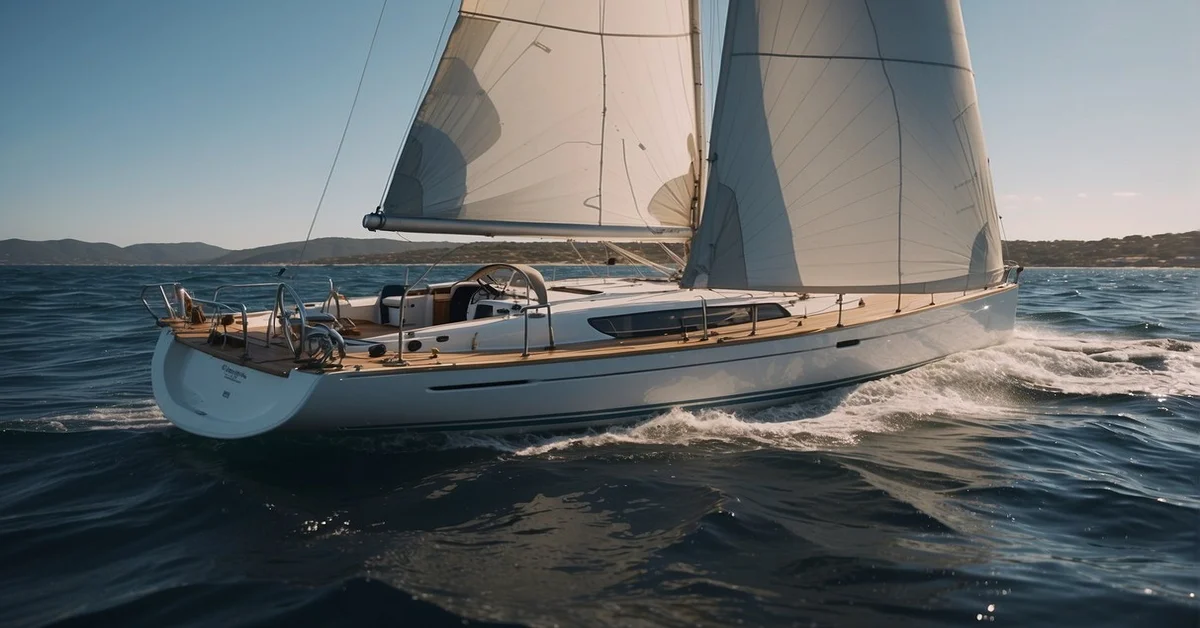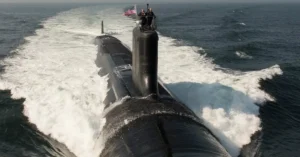Navigating the waters of boat design, the “beam of a boat” is a pivotal feature that dictates your vessel’s stability and agility. It’s the unsung hero of seafaring, the width that decides if your journey will be a smooth sail or a thrilling dash.
Get ready to dive into the intricacies of the beam and discover how it shapes your maritime adventures!
Beam of a Boat – Everything You Need to Know
When I first started learning about boats, I discovered that the “beam of a boat” is one fundamental measurement that’s crucial to a vessel’s stability, capacity, and overall performance. It’s simply the width of a boat at its widest part, typically measured where the boat hull is the broadest.
Key Points About the Beam:
- Width at Widest Point: The beam is the maximum width across the boat’s hull.
- Stability Indicator: A wider beam can contribute to improved stability on the water.
- Design Variations: Boats may have straight-line beams or curved beams depending on their hull design.
- Performance Factor: The beam affects a boat’s maneuverability and speed; narrower beams generally allow for faster movement.
Beam-to-Length Ratios:
- Small Boats: Often adhere to a 2:1 or 3:1 length-to-beam ratio.
- Larger Vessels: For boats over 30 feet, a 5:1 length-to-beam ratio is common.
Here’s how these dimensions play a role:
- Smaller Beam: Boats with a smaller beam relative to their length are quicker but may rock more in choppy conditions.
- Larger Beam: Vessels with a larger beam offer more interior space and stability yet might be harder to maneuver.
Boat designers and builders often perform complex calculations to determine the ideal beam for a boat’s intended use, ensuring a balance between stability and performance. Whether your interest in boats is casual or professional, understanding the beam is as essential as knowing the overall length.
With this in mind, you can better appreciate the intricate dance of design that goes into every vessel on the water.
Basics of Boat Beam Design

When I consider a boat’s beam, I consider its width at its widest point. This critical measurement impacts stability, design, and overall performance.
Understanding Boat Beam Dynamics
The boat beam, or breadth, is measured from the outer edge of the stern to the bow—essentially stretching across the hull’s widest part. In boat design, the beam is more than just width; it’s about how the boat interacts with the water.
Broader beams contribute to more excellent stability, particularly when the boat is at rest or moving slowly. Conversely, a wider beam can also result in more resistance when moving through water, affecting speed and fuel efficiency.
Effect of Beam on Boat Performance
The beam’s influence on performance is multifaceted. A wide beam improves stability, reducing the likelihood of capsizing. However, it’s a balancing act; too wide a beam can lead to unnecessary drag and hinder the boat’s ability to cut through the water efficiently.
Conversely, a narrow beam increases speed and agility but at the cost of stability, particularly in rough waters. Boat designers work within these constraints to optimize for the intended use—be it racing, cruising, or fishing.
Measuring Boat Beam
To accurately measure the beam, I take a tape measure or measuring tape and extend it from gunwale to gunwale at the boat’s widest part, usually found near the midship or centerline.
For specific designs, measurements may also be taken at the deck or the waterline, affecting both keel and draft designs. A correct beam measurement is fundamental for ensuring a boat’s adherence to regulatory standards and suitability for various boating activities.
Considerations for Different Boat Types

When I think about the “Beam of a Boat,” it’s fascinating how this one measurement can greatly affect a boat’s characteristics, from the sleek racing sailboats to the sprawling catamarans. It’s key to consider how beam width influences everything from a vessel’s stability to its speed and handling.
Design Implications for Sailboats and Racing
The beam plays a critical role in speed and handling for sailboats, particularly those designed for racing. A narrow beam reduces the length-to-beam ratio, enhancing speed and maneuverability.
This design choice means the hull swiftly cuts through water but may reduce overall comfort and carrying capacity. Naval architects are tasked with finding the sweet spot between speed and stability, ensuring the vessel remains seaworthy.
Stability in Multihulls Versus Monohulls
In multihulls, vessels like catamarans and trimarans highlight a contrast to traditional monohulls. A wide multi-hull beam results in enhanced stability, which is a boon for passenger comfort and safety.
For instance, a catamaran’s beam helps prevent excessive heeling, making these boats ideal for leisure activities. Whether on the port or starboard side, a wider beam also affords more storage space for cargo and amenities.
Customization for Specialized Vessels
Customization of the boat beam is essential for specialized vessels such as fishing boats. A wider maximum beam improves stability and provides more room for cargo, storage, and passengers. Designs often consider the type of waters the boat will navigate—calm lakes versus choppy seas—and the vessel’s primary function.
Regulations and standards set by marine surveyors may determine the minimum and maximum beam for safety, which must be adhered to during the design and construction phases.
FAQ – Beam of a Boat

When discussing the Beam of a Boat, I’m referring to a key measurement that dramatically impacts stability, handling, and space.
What is the beam on a boat called?
The beam on a boat is often called the “beam.” It represents the widest part of the boat and, depending on the design, can occur at different points along the vessel.
What is the maximum beam of a boat?
The maximum beam refers to the absolute most comprehensive part of the boat. There’s no standard maximum as it varies with the size and type of boat; however, larger vessels like cruise ships will typically have much wider beams than small fishing boats.
How is a beam measured on a boat?
To measure a boat’s beam, you find the widest part of the boat. This is usually measured in a straight line from the outer edge of the hull on one side to the opposite side. However, this measurement could follow a curve due to different hull designs.
What is the beam end of a ship?
The beam end of a ship could refer to the outermost part of the ship’s beam or simply the ends of the beam itself, which is integral in determining the overall beam measurement. This part is crucial as it can also affect the available deck space.
Cast your line in the comments below and share how the beam of a boat has shaped your seafaring experiences – we’re all aboard to hear your stories!









